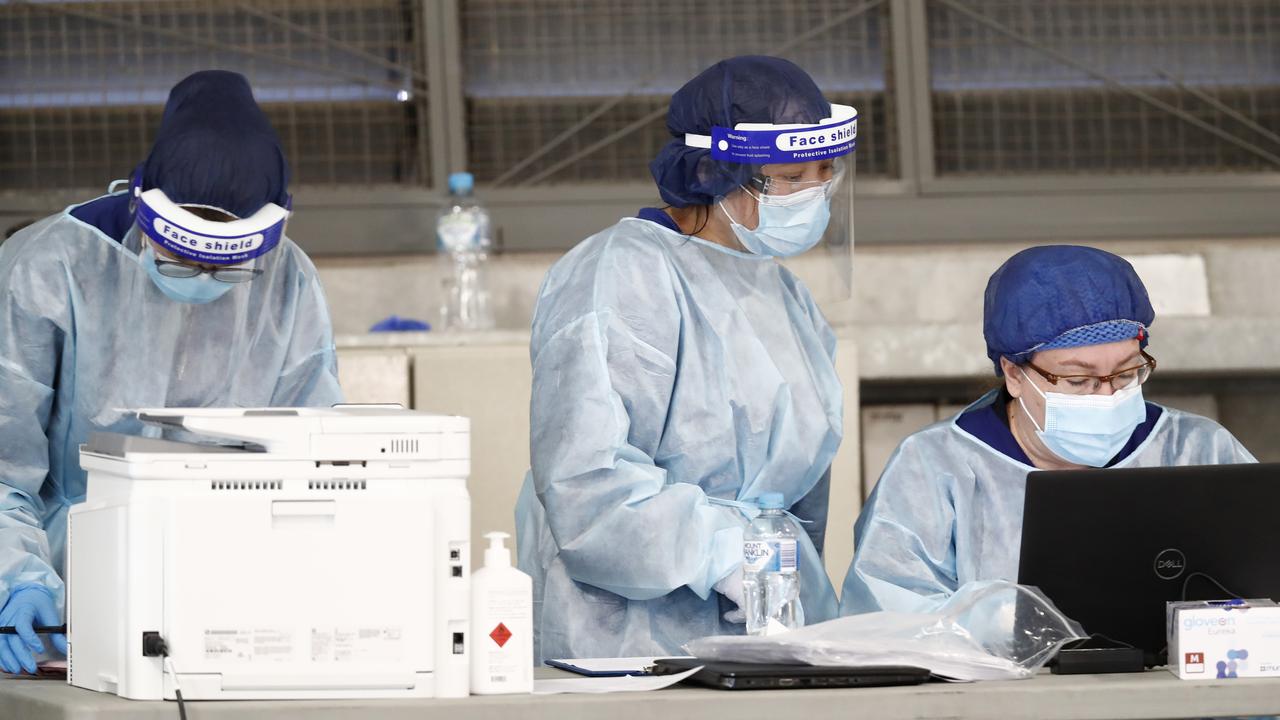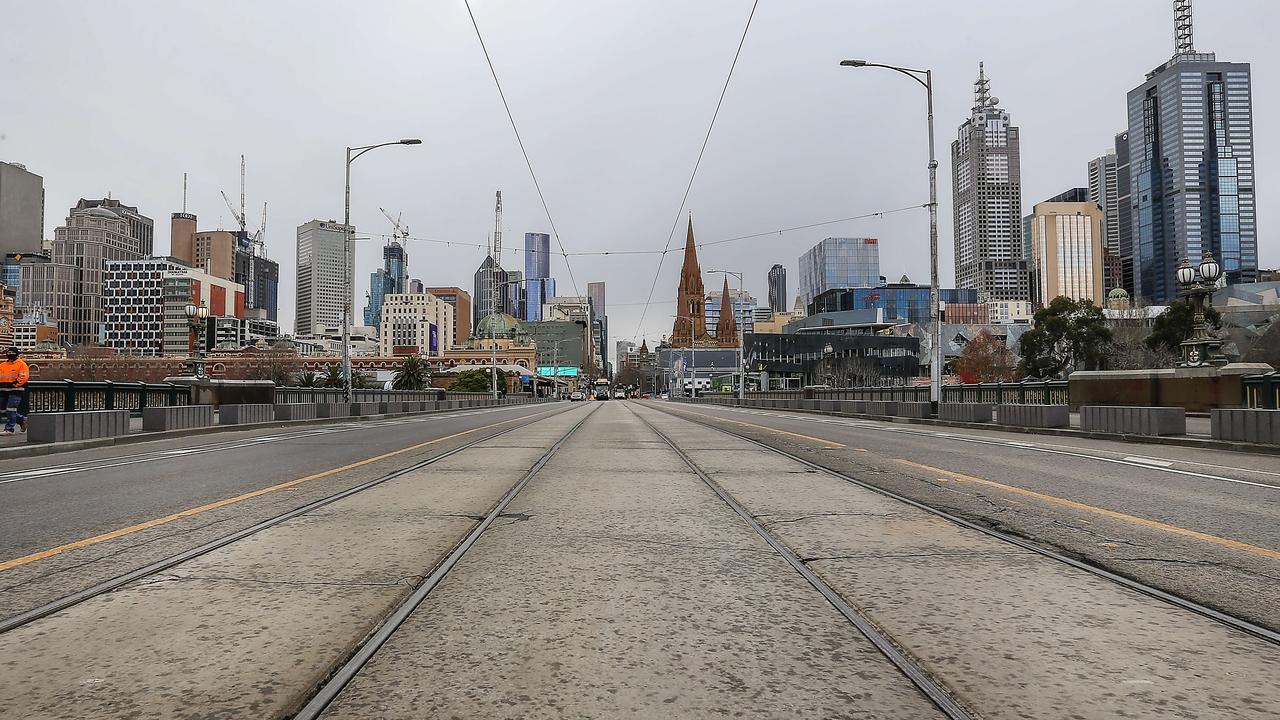Skytrains lift us out of the trenches
DESIGN proposals for major projects like level crossing removals can often bewilder us. We shake our heads and ask: “If that’s the answer, what was the question?”

Opinion
Don't miss out on the headlines from Opinion. Followed categories will be added to My News.
DESIGN proposals for major projects like level crossing removals can often bewilder us. We shake our heads and ask: “If that’s the answer, what was the question?”
Public debate becomes tangled, details blow out of proportion, issues are distorted and party-political pointscoring obscures what’s really at stake.
If we get careless about how we discuss such issues, we risk compromising our future for short-term gain and long-term mediocrity. Level crossing removals are about much more than congestion-busting our roads. They will do more to improve public transport than the Melbourne Metro rail tunnel.
Victorians have long voted for better public transport. Community consultation over the past two decades shows improving public transport is the highest priority. But managing road congestion is important, too. We can fix both by focusing on the pinch-points where they share space — for trains at level crossings and for trams and buses travelling at snail’s pace on already busy roads. Level crossings don’t just cause traffic congestion, they severely restrict our ability to improve public transport. They limit how many trains can run and hamper reliability of buses and trams.
Melbourne has more than 170 level crossings 116 of them are used by buses and, until yesterday, four were used by trams. “Smart buses” have routes planned to avoid level crossings, but that isn’t possible for the rest and better feeder bus services will be crucial to making the most of costly improvements to passenger rail like Melbourne Metro.
Both major parties took schemes for rail tunnels beneath the city to the last election, so whoever you voted for, level crossing removals are needed in large numbers to make their plans work. And both major parties promised to remove large numbers of level crossings, too, with only minor differences over which ones to get rid of. We shouldn’t waste energy arguing about which ones to remove; we need to urge whoever is in power to remove as many as possible, as fast as we can. So the question is: how can the way we remove these crossing make the most difference, to give us the best return on our investment?
Because most level crossings are next to stations, their removal is not just about improving traffic flow. It is also about stations and how they can better connect communities. Stations connect us when we change from being a pedestrian to being a train passenger, or when we change from the train to a bus, tram, bike or car.
Stations generate large amounts of pedestrians, so integrating stations with local retail and community precincts improves economic and community life. That is where good planning and design really matters, to ensure we maximise ground-level connectivity, as well as access into and around the station. A station that integrates lively shops and cafes will be a safer and more pleasant place than one patrolled by armed police.
Under current plans, at least 35 stations are affected by level crossing removals and we need to obtain maximum benefit from the enormous capital investment.
TUNNELS are not economically viable unless they are in the CBD or other areas of very high land value. That leaves four options: road over or underpasses and elevated or trenched rail. The 1960s and 70s legacies of roads over or under the rail at places such as Oakleigh, Huntingdale, Footscray, Sunshine and Newport have lead to divided communities, closed shops and dark passageways.
Lowering or raising the rail lines is the only acceptable option for activity centres. Lowering the tracks only worsens the disconnection rail lines already create.
Trenches can be several hundred metres long and must be lined with anti-suicide fencing. Decking is extremely expensive and in most suburbs development at any scale will not recover costs. If we elevate the railway, we maximise ground level connectivity by releasing the public land in the rail reserve. The space under the viaduct can be used for commerce and recreation integrated with stations. It also allows the flexibility for optimal transfers to buses or trams, bikes or cars.
These are not new ideas; look at Glenferrie and Auburn, in the heart of Melbourne’s most desirable areas, and many other elevated stations in the inner north, south and east. While a hundred years ago they raised Melbourne’s railways using embankments, today elegant viaducts are a better answer and the longer the viaducts, the more the benefits. We can have linear parks, walking trails and bike paths connecting communities along the line as well as across it.
Elevated rail is common around the world, so the technical design benefits are well-understood. The noise of level crossing bells, tooting trains and poorly-maintained tracks would disappear and sound transmission is easily limited. Higher viaducts mean better views for passengers and greater visual privacy for adjacent property, not to mention more natural light and amenity. Elevated rail can minimise disruption during construction and attractive, visible stations are good for way-finding.
Beauty is in the eyes of beholders, though perhaps more will agree a well-designed viaduct looks a lot better than a concrete trench lined with anti-suicide fences.
Elevated rail can give our city many more benefits if done well, rather than merely removing local traffic obstacles. So when we ask ourselves whether skytrains are a good idea, let’s focus on how to give Melburnians improved public transport, better stations, more public open space and better connected communities, as well as less congested roads.
IAN WOODCOCK IS A LECTURER IN URBAN DESIGN AT RMIT UNIVERSITY


